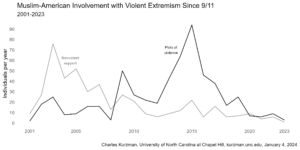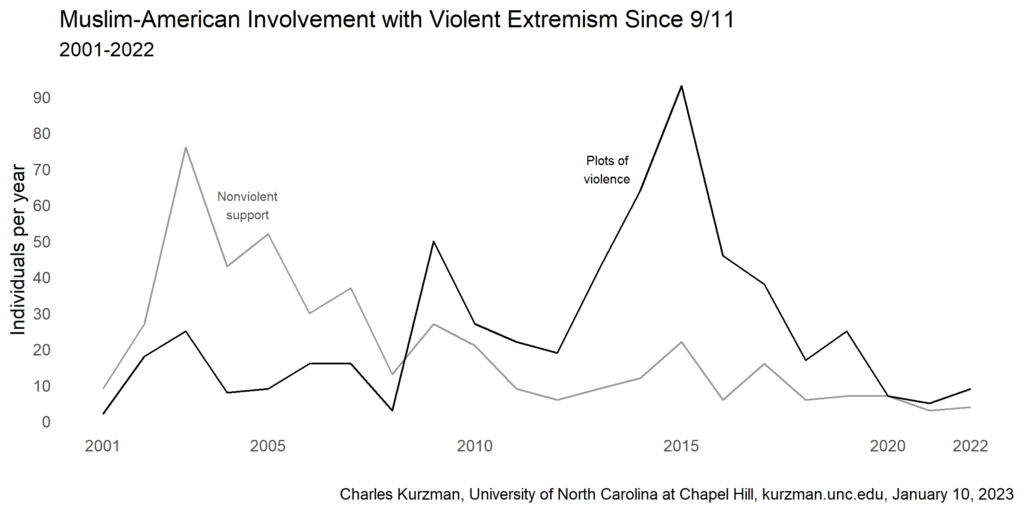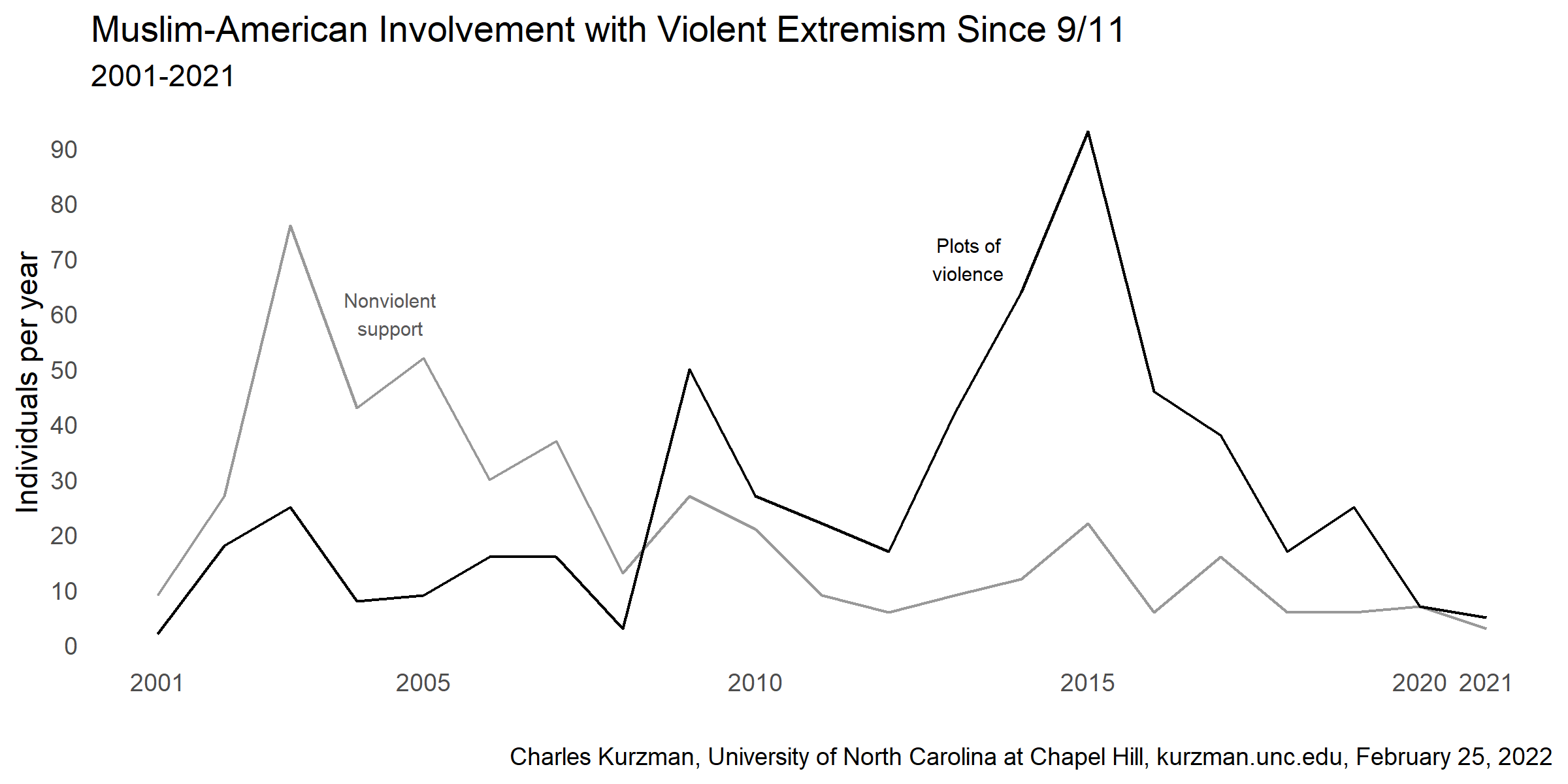Islamic Terrorism
Muslim-American Involvement with Violent Extremism, 2001-2023
Examine the data for yourself here. A full collection of past reports is available here.
Fatalities in the U.S. from Muslim-American involvement with violent extremism since 9/11: 145.
Victims of murder in the U.S. since 9/11, according to the FBI’s Expanded Homicide Offense Counts: 312,317.
Muslim-American Involvement with Violent Extremism, 2001-2022
Muslim-American Involvement with Violent Extremism, 2001-2021
I’m Sorry I Called You a Terrorist
 Charles Kurzman, “I’m Sorry I Called You a Terrorist,” October 29, 2021. Just before the pandemic, a young woman came to my office and asked what I knew about her father. “Is my father a terrorist?” More…
Charles Kurzman, “I’m Sorry I Called You a Terrorist,” October 29, 2021. Just before the pandemic, a young woman came to my office and asked what I knew about her father. “Is my father a terrorist?” More…
Al-Qaida, Islamic State Group Struggle for Recruits
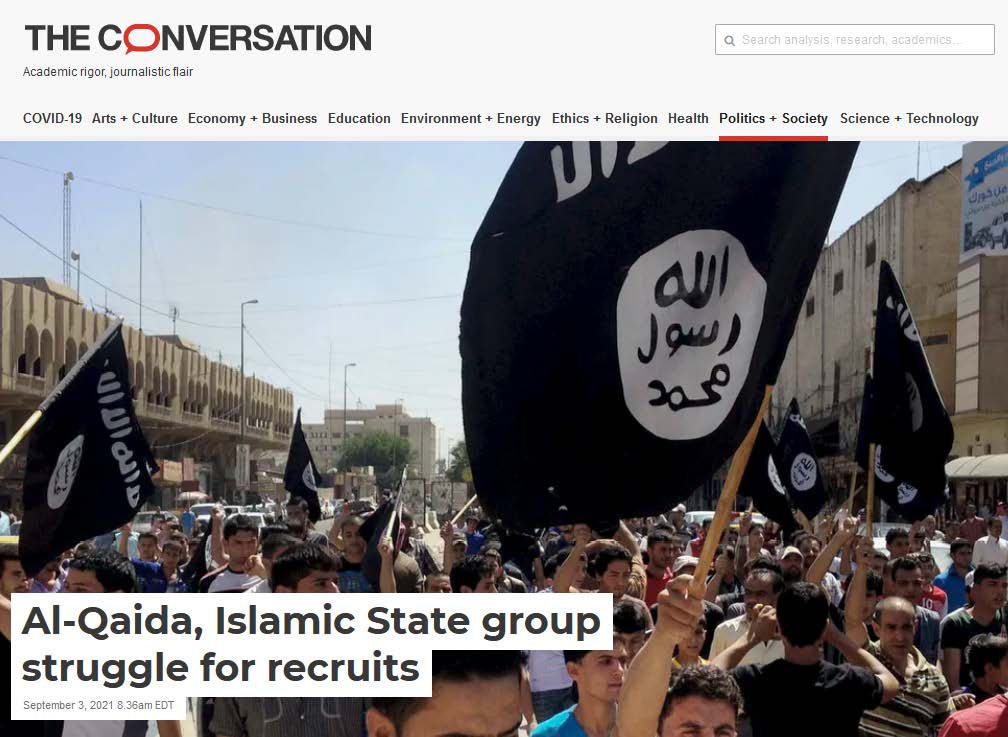 Charles Kurzman, “Al-Qaida, Islamic State Group Struggle for Recruits,” The Conversation, September 3, 2021. Al-Qaida was planning two sets of terrorist attacks on the United States in 2001. On Sept. 11, 2021, as Americans commemorate and mourn the lives lost that Tuesday morning 20 years ago, it is important to remember the second plot as well – the attacks that didn’t happen. As strange as it may sound, revolutionary Islamist groups suffer from recruitment problems as any other organization does. More…
Charles Kurzman, “Al-Qaida, Islamic State Group Struggle for Recruits,” The Conversation, September 3, 2021. Al-Qaida was planning two sets of terrorist attacks on the United States in 2001. On Sept. 11, 2021, as Americans commemorate and mourn the lives lost that Tuesday morning 20 years ago, it is important to remember the second plot as well – the attacks that didn’t happen. As strange as it may sound, revolutionary Islamist groups suffer from recruitment problems as any other organization does. More…
Muslim-American Involvement with Violent Extremism, 2001-2020
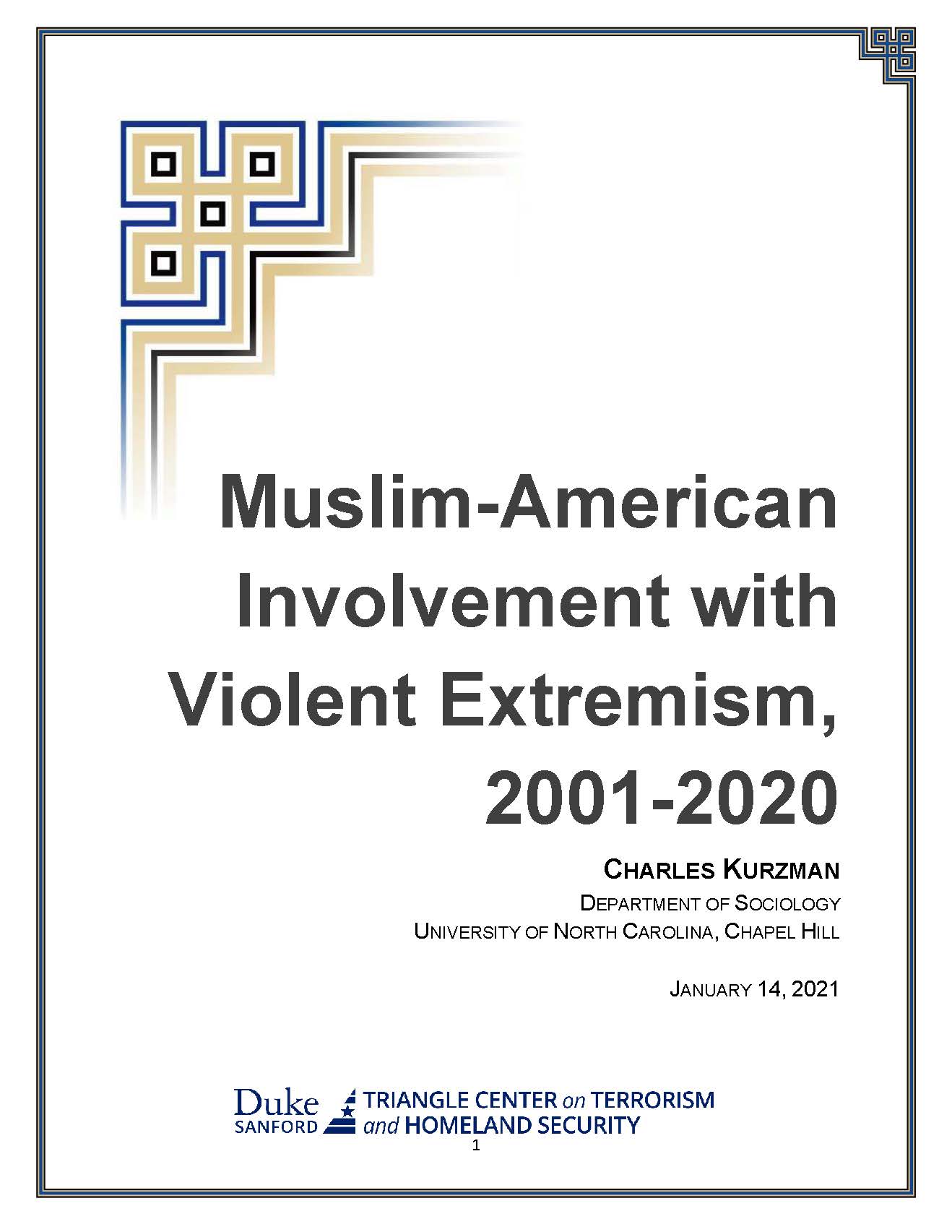 Charles Kurzman, “Muslim-American Involvement with Violent Extremism, 2001-2020,” Triangle Center on Terrorism and Homeland Security, January 14, 2021. Seven Muslim-Americans were arrested or killed during alleged involvement with violent extremism in 2020, the lowest total since 2008. This continues the decline since the peak of 90 cases in 2015. Islamic extremism played almost no role in the considerable unrest that the United States experienced in 2020. The total number of fatalities in the United States from Muslim-American violent extremism since 9/11 remained at 141. Over this same period, there have been more than 309,000 murders in the United States. More…
Charles Kurzman, “Muslim-American Involvement with Violent Extremism, 2001-2020,” Triangle Center on Terrorism and Homeland Security, January 14, 2021. Seven Muslim-Americans were arrested or killed during alleged involvement with violent extremism in 2020, the lowest total since 2008. This continues the decline since the peak of 90 cases in 2015. Islamic extremism played almost no role in the considerable unrest that the United States experienced in 2020. The total number of fatalities in the United States from Muslim-American violent extremism since 9/11 remained at 141. Over this same period, there have been more than 309,000 murders in the United States. More…
The 6 Countries in Trump’s New Travel Ban Pose Little Threat to US National Security
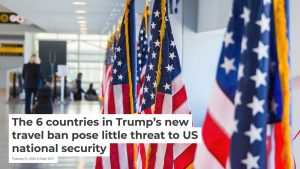 Charles Kurzman, “The 6 Countries in Trump’s New Travel Ban Pose Little Threat to US National Security,” The Conversation, February 6, 2020. “Over the past two decades, how many people have been killed in the U.S. by extremists from the six countries on the Trump administration’s new travel ban list? The answer is zero, according to data I have collected from Department of Justice records and other sources. Immigrants from these countries constitute less than 1% of terrorism cases in the United States, and none of the cases in the last two years.” More…
Charles Kurzman, “The 6 Countries in Trump’s New Travel Ban Pose Little Threat to US National Security,” The Conversation, February 6, 2020. “Over the past two decades, how many people have been killed in the U.S. by extremists from the six countries on the Trump administration’s new travel ban list? The answer is zero, according to data I have collected from Department of Justice records and other sources. Immigrants from these countries constitute less than 1% of terrorism cases in the United States, and none of the cases in the last two years.” More…
Muslim-American Involvement with Violent Extremism, 2001-2019
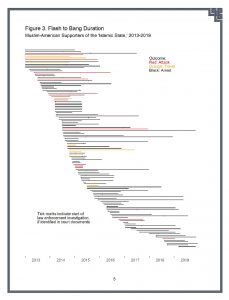 Charles Kurzman, “Muslim-American Involvement with Violent Extremism, 2001-2019,” Triangle Center on Terrorism and Homeland Security, January 21, 2020. Twenty-four Muslim-Americans were arrested for alleged involvement with violent extremism in 2019, higher than the previous year but lower than the peak years of 2014-2016. This year’s annual report also presents new data on the lengthening period between radicalization and attempts at violence, allaying concerns voiced by counterterrorism officials about a quickening pace of ‘flash’ to ‘bang.'” More…
Charles Kurzman, “Muslim-American Involvement with Violent Extremism, 2001-2019,” Triangle Center on Terrorism and Homeland Security, January 21, 2020. Twenty-four Muslim-Americans were arrested for alleged involvement with violent extremism in 2019, higher than the previous year but lower than the peak years of 2014-2016. This year’s annual report also presents new data on the lengthening period between radicalization and attempts at violence, allaying concerns voiced by counterterrorism officials about a quickening pace of ‘flash’ to ‘bang.'” More…
The Missing Martyrs: Why Are There So Few Muslim Terrorists?
Charles Kurzman, The Missing Martyrs: Why Are There So Few Muslim Terrorists? (New York: Oxford University Press, 2019). More…
What Terror Experts Can Learn From Public Health Experts
 Charles Kurzman, “What Terror Experts Can Learn From Public Health Experts,” Foreign Policy, September 28, 2019. “In the early 2000s, two events sowed fear in the United States and around the world: the 9/11 attacks in 2001 and the SARS outbreak of 2002 and 2003. In the years that followed, the professional communities responsible for responding to these threats, and informing the public about them, have followed two very different paths. In the fight against deadly diseases, public health experts have sought to balance the need for preparedness with their duty to avoid hyperbole, which can lead to panic. National security experts should adopt this same ethos. More…
Charles Kurzman, “What Terror Experts Can Learn From Public Health Experts,” Foreign Policy, September 28, 2019. “In the early 2000s, two events sowed fear in the United States and around the world: the 9/11 attacks in 2001 and the SARS outbreak of 2002 and 2003. In the years that followed, the professional communities responsible for responding to these threats, and informing the public about them, have followed two very different paths. In the fight against deadly diseases, public health experts have sought to balance the need for preparedness with their duty to avoid hyperbole, which can lead to panic. National security experts should adopt this same ethos. More…
Acknowledging State Terrorism
 Charles Kurzman, “Acknowledging State Terrorism,” June 20, 2019. “The United States government now recognizes the existence of state terrorism. If the Iranian Revolutionary Guard Corps (IRGC) is a foreign terrorist organization, as the Trump administration announced in April, then what other government agencies around the world meet the Department of State’s statutory definition of terrorism: “premeditated, politically motivated violence perpetrated against noncombatant targets”?” More…
Charles Kurzman, “Acknowledging State Terrorism,” June 20, 2019. “The United States government now recognizes the existence of state terrorism. If the Iranian Revolutionary Guard Corps (IRGC) is a foreign terrorist organization, as the Trump administration announced in April, then what other government agencies around the world meet the Department of State’s statutory definition of terrorism: “premeditated, politically motivated violence perpetrated against noncombatant targets”?” More…
The Privacy Rights of Terrorism Defendants, Muslim and Non-Muslim
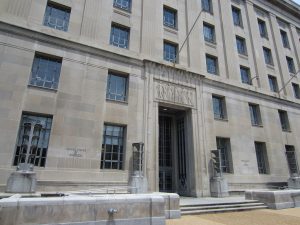 Charles Kurzman, “The Privacy Rights of Terrorism Defendants, Muslim and Non-Muslim,” Lawfare, April 5, 2019. The official position of the Department of Justice—according to a legal brief filed in February—is that association with a terrorism charge is so stigmatizing that defendants should not be publicly identified. This is puzzling, since the department itself periodically releases a list of Muslim Americans convicted in terrorism-related cases, as well as hundreds of press releases naming Muslim American terrorism defendants. Yet the department has never released a list of domestic terrorism-related cases, and its press releases named only one-quarter of defendants involved in right-wing violent extremism. More…
Charles Kurzman, “The Privacy Rights of Terrorism Defendants, Muslim and Non-Muslim,” Lawfare, April 5, 2019. The official position of the Department of Justice—according to a legal brief filed in February—is that association with a terrorism charge is so stigmatizing that defendants should not be publicly identified. This is puzzling, since the department itself periodically releases a list of Muslim Americans convicted in terrorism-related cases, as well as hundreds of press releases naming Muslim American terrorism defendants. Yet the department has never released a list of domestic terrorism-related cases, and its press releases named only one-quarter of defendants involved in right-wing violent extremism. More…
Building Bridges Podcast
 Interview about The Missing Martyrs on the Building Bridges Podcast, Georgetown University, March 1, 2019. More…
Interview about The Missing Martyrs on the Building Bridges Podcast, Georgetown University, March 1, 2019. More…
Muslim-American Involvement with Violent Extremism, 2001-2018
 Charles Kurzman, “Muslim-American Involvement with Violent Extremism, 2001-2018,” Triangle Center on Terrorism and Homeland Security, January 22, 2019. The wave of Muslim-Americans associating themselves with the self-proclaimed “Islamic State” appears to have dwindled, continuing a downward trend that was visible in the final year of the Obama administration. There were no incidents or arrests in 2018 involving Muslim extremists who entered the United States illegally. These findings contradict the alarms about terrorism sounded by the Trump administration. In a survey conducted for this report, terrorism experts attribute the decline in Muslim-American involvement with violent extremism to the loss of territory by the Islamic State, the reduction in online recruitment, and the already small scale of Muslim-American extremism. More…
Charles Kurzman, “Muslim-American Involvement with Violent Extremism, 2001-2018,” Triangle Center on Terrorism and Homeland Security, January 22, 2019. The wave of Muslim-Americans associating themselves with the self-proclaimed “Islamic State” appears to have dwindled, continuing a downward trend that was visible in the final year of the Obama administration. There were no incidents or arrests in 2018 involving Muslim extremists who entered the United States illegally. These findings contradict the alarms about terrorism sounded by the Trump administration. In a survey conducted for this report, terrorism experts attribute the decline in Muslim-American involvement with violent extremism to the loss of territory by the Islamic State, the reduction in online recruitment, and the already small scale of Muslim-American extremism. More…
Chasing the Ghosts of Violent Extremism in the Middle East
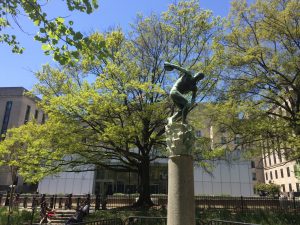 Charles Kurzman, “Chasing the Ghosts of Violent Extremism in the Middle East,” May 1, 2018. Briefing for Samuel Brownback, U.S. ambassador-at-large for international religious freedom. “The primary sources of violent extremism in the Middle East today are … ghosts. They are dead but still with us. They float through borders and walls, disembodied, on the internet and social media. They haunt us with threats of revenge.” More…
Charles Kurzman, “Chasing the Ghosts of Violent Extremism in the Middle East,” May 1, 2018. Briefing for Samuel Brownback, U.S. ambassador-at-large for international religious freedom. “The primary sources of violent extremism in the Middle East today are … ghosts. They are dead but still with us. They float through borders and walls, disembodied, on the internet and social media. They haunt us with threats of revenge.” More…
Muslim-American Involvement with Violent Extremism, 2017
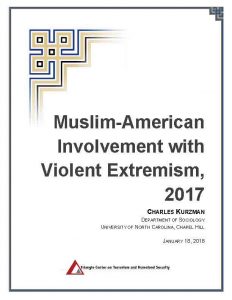 Charles Kurzman, “Muslim-American Involvement with Violent Extremism, 2017,” January 18, 2018. The number of Muslim-Americans associated with violent extremism continued a downward trend that was visible in the final year of the Obama administration. This trend defied expectations that President Donald Trump’s presidency would generate a distinctive pattern of violent extremism. The administration did not identify “support networks” for terrorism in the United States, as Trump had promised, and Trump’s anti-Muslim rhetoric and policies did not trigger a backlash of increased violent extremism, as some Muslim extremists had predicted. More…
Charles Kurzman, “Muslim-American Involvement with Violent Extremism, 2017,” January 18, 2018. The number of Muslim-Americans associated with violent extremism continued a downward trend that was visible in the final year of the Obama administration. This trend defied expectations that President Donald Trump’s presidency would generate a distinctive pattern of violent extremism. The administration did not identify “support networks” for terrorism in the United States, as Trump had promised, and Trump’s anti-Muslim rhetoric and policies did not trigger a backlash of increased violent extremism, as some Muslim extremists had predicted. More…
Examine the data for yourself here.
Previous annual reports on Muslim-American involvement with violent extremism are available here.
Muslim-American Involvement with Violent Extremism, 2016
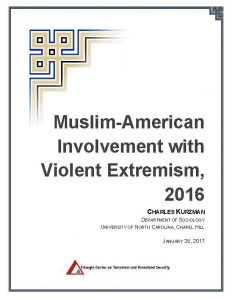 Charles Kurzman, “Muslim-American Involvement with Violent Extremism, 2016,” January 26, 2017. The number of Muslim-Americans associated with violent extremism dropped 40 percent in 2016, as compared with the previous year, although this drop was overshadowed by the mass shooting in Orlando, Florida, in June 2016. Only 20 percent of these individuals had family backgrounds in one of the seven Muslim-majority countries reportedly designated for immigrant bans by the Trump administration. There have been no fatalities in the U.S. since 9/11 caused by extremists from these countries. More…
Charles Kurzman, “Muslim-American Involvement with Violent Extremism, 2016,” January 26, 2017. The number of Muslim-Americans associated with violent extremism dropped 40 percent in 2016, as compared with the previous year, although this drop was overshadowed by the mass shooting in Orlando, Florida, in June 2016. Only 20 percent of these individuals had family backgrounds in one of the seven Muslim-majority countries reportedly designated for immigrant bans by the Trump administration. There have been no fatalities in the U.S. since 9/11 caused by extremists from these countries. More…
Charles Kurzman, “These Numbers Show Why Trump’s Muslim Entry Limit Is Absurd,” Huffington Post, January 26, 2017.
Coverage by National Public Radio, January 27, 2017; The New York Times, January 28, 2017; The Washington Post, January 28, 2017; The Washington Post, February 7, 2017; The Wall Street Journal, February 10, 2017.
In 2016, Americans were less likely to be killed by Muslim extremists (1 in six million) than for being Muslim (one in one million): 54 fatalities in a population of approximately 324 million vs. 4 fatalities (Khalid Jabara in Tulsa and Imam Maulama Akonjee, Thara Uddin, and Nazma Khanam in New York) in a population of approximately 3 million. Update of 2015 data; coverage by Nicholas Kristof, The New York Times, February 12, 2017.
Terrorism Frightens Us ‘Far Out of Proportion’ to Actual Risk
 Greg Toppo, “Expert: Terrorism Frightens Us ‘Far Out of Proportion’ to Actual Risk,” USA Today, September 21, 2016 (paper edition, September 22, 2016). “Q: In 2016, how likely is it that an American will be killed by a terrorist, Muslim or non-Muslim? A: Fortunately, terrorism has been very rare in the United States. … Terrorism frightens people far out of proportion to the actual number of victims — indeed, that is its primary goal: to create a sense of terror.” More….
Greg Toppo, “Expert: Terrorism Frightens Us ‘Far Out of Proportion’ to Actual Risk,” USA Today, September 21, 2016 (paper edition, September 22, 2016). “Q: In 2016, how likely is it that an American will be killed by a terrorist, Muslim or non-Muslim? A: Fortunately, terrorism has been very rare in the United States. … Terrorism frightens people far out of proportion to the actual number of victims — indeed, that is its primary goal: to create a sense of terror.” More….
Also: interview with Michel Martin on The Diane Rehm Show, National Public Radio, September 20, 2016.
The Police Chief: Research in Brief
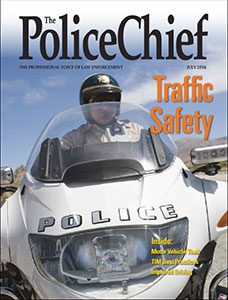 David Schanzer, Charles Kurzman, Jessica Toliver, and Elizabeth Miller, “Research in Brief: The Challenge and Promise of Using Community Policing Strategies to Prevent Violent Extremism,” The Police Chief (International Association of Chiefs of Police), July 2016, pp. 14-15. “Five years ago, the White House issued a strategy calling for the development of partnerships between police and communities as the key element of an effort to counter violent extremism (CVE) in the United States. The authors’ research assesses the challenges and promise of this strategy, based on a survey of U.S. law enforcement agencies and hundreds of hours of interviews and site visits with police departments and community members.” More…
David Schanzer, Charles Kurzman, Jessica Toliver, and Elizabeth Miller, “Research in Brief: The Challenge and Promise of Using Community Policing Strategies to Prevent Violent Extremism,” The Police Chief (International Association of Chiefs of Police), July 2016, pp. 14-15. “Five years ago, the White House issued a strategy calling for the development of partnerships between police and communities as the key element of an effort to counter violent extremism (CVE) in the United States. The authors’ research assesses the challenges and promise of this strategy, based on a survey of U.S. law enforcement agencies and hundreds of hours of interviews and site visits with police departments and community members.” More…
Well Said: America and Terrorism
 Charles Kurzman, “America and Terrorism,” interview with Brandon Bieltz on UNC-Chapel Hill’s Well Said podcast, April 27, 2016. In this week’s episode of the Well Said podcast, sociology professor Charles Kurzman discusses terrorism and his research on the small number of Muslim-Americans who join militant groups. More…
Charles Kurzman, “America and Terrorism,” interview with Brandon Bieltz on UNC-Chapel Hill’s Well Said podcast, April 27, 2016. In this week’s episode of the Well Said podcast, sociology professor Charles Kurzman discusses terrorism and his research on the small number of Muslim-Americans who join militant groups. More…
Community Policing to Prevent Violent Extremism
 David Schanzer, Charles Kurzman, Jessica Toliver, and Elizabeth Miller, “The Challenge and Promise of Using Community Policing Strategies to Prevent Violent Extremism,” Triangle Center on Terrorism and Homeland Security, January 2016. “Policing agencies face multiple obstacles to creating community partnerships focused on preventing acts of violent extremism. But … some policing agencies are following a set of promising practices which, if applied effectively, can result in increasing trust between the police and the communities they serve. These trusting relationships can serve as a platform for addressing many public safety threats, including, but not limited to, violent extremism.” More…
David Schanzer, Charles Kurzman, Jessica Toliver, and Elizabeth Miller, “The Challenge and Promise of Using Community Policing Strategies to Prevent Violent Extremism,” Triangle Center on Terrorism and Homeland Security, January 2016. “Policing agencies face multiple obstacles to creating community partnerships focused on preventing acts of violent extremism. But … some policing agencies are following a set of promising practices which, if applied effectively, can result in increasing trust between the police and the communities they serve. These trusting relationships can serve as a platform for addressing many public safety threats, including, but not limited to, violent extremism.” More…
America Is Holding Itself Hostage to Terrorism
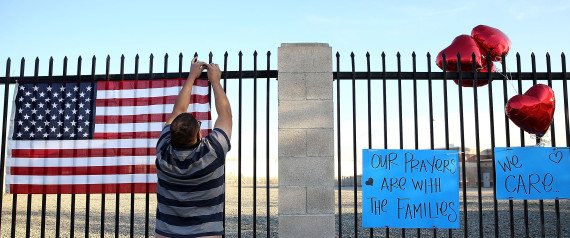 Charles Kurzman, “America Is Holding Itself Hostage to Terrorism,” The Huffington Post, December 17, 2015. “So far this year, Americans have been more likely to be killed for being Muslim — than by a Muslim. One in one million Muslim Americans died because of hatred for their faith, compared with one in 17 million other Americans who died at the hands of Muslim militants. Fortunately, both types of violence are incredibly rare. … We need to stop holding ourselves hostage to rare incidents of Islamic violence. We can only remain the land of the free if we start behaving like the home of the brave.” More…
Charles Kurzman, “America Is Holding Itself Hostage to Terrorism,” The Huffington Post, December 17, 2015. “So far this year, Americans have been more likely to be killed for being Muslim — than by a Muslim. One in one million Muslim Americans died because of hatred for their faith, compared with one in 17 million other Americans who died at the hands of Muslim militants. Fortunately, both types of violence are incredibly rare. … We need to stop holding ourselves hostage to rare incidents of Islamic violence. We can only remain the land of the free if we start behaving like the home of the brave.” More…
Ideological Violence Is Terrorism
 Charles Kurzman, “Ideological Violence Is Terrorism,” New York Times “Room for Debate” forum, December 3, 2015. “Violence like the shooting in San Bernardino, Calif., raises an existential question: What are we most afraid of? Ideological killings, which occur relatively rarely, or “ordinary” violence — including school shootings, gang murders, domestic abuse and other forms of homicide — which is much more common?” More…
Charles Kurzman, “Ideological Violence Is Terrorism,” New York Times “Room for Debate” forum, December 3, 2015. “Violence like the shooting in San Bernardino, Calif., raises an existential question: What are we most afraid of? Ideological killings, which occur relatively rarely, or “ordinary” violence — including school shootings, gang murders, domestic abuse and other forms of homicide — which is much more common?” More…
A Resolute Commitment to Coexistence — Now That Projects Strength
![]() Charles Kurzman, “A Resolute Commitment to Coexistence — Now That Projects Strength,” IslamiCommentary, November 30, 2015. “Over the past year, the Islamic State came to realize that even small-scale, low-tech attacks by Muslim extremists — a knifing in Boston, rifle shots in Chattanooga — could attract massive attention and concern. Few Muslims have taken up the call to mayhem, but a few is enough. Opportunistic politicians will do the Islamic State’s work for it, warning their constituencies that they face an existential threat from ISIS and its supporters. Claiming to project strength, these politicians stoke the sense of vulnerability that the Islamic State aims to instill.” More…
Charles Kurzman, “A Resolute Commitment to Coexistence — Now That Projects Strength,” IslamiCommentary, November 30, 2015. “Over the past year, the Islamic State came to realize that even small-scale, low-tech attacks by Muslim extremists — a knifing in Boston, rifle shots in Chattanooga — could attract massive attention and concern. Few Muslims have taken up the call to mayhem, but a few is enough. Opportunistic politicians will do the Islamic State’s work for it, warning their constituencies that they face an existential threat from ISIS and its supporters. Claiming to project strength, these politicians stoke the sense of vulnerability that the Islamic State aims to instill.” More…
Why We Care About Some Gunmen, and Not Others
 Charles Kurzman, “Why We Care About Some Gunmen, and Not Others,” IslamiCommentary, August 31, 2015. Not every gunshot echoes alike. Some echoes fade quickly, and are only heard in a single neighborhood. Others resonate nationwide, making headlines for days or weeks, like Vester Flanagan’s murder of two television journalists near Roanoke, Virginia, last week — one of a series of shooters to gain national attention over the past year, including Mohammad Abdulazeez in Chattanooga, Tennessee; Dylann Roof in Charleston, South Carolina; and Darren Wilson in Ferguson, Missouri. These are not names that you would ordinarily see grouped together, and they do not have anything in common, except that they are American males who used lethal gunfire to address their personal sense of threat — and then became household names. Beyond the horrific nature of the crimes, what keeps these particular gunmen in the news is their adoption by political movements as symbols of a broader threat. More…
Charles Kurzman, “Why We Care About Some Gunmen, and Not Others,” IslamiCommentary, August 31, 2015. Not every gunshot echoes alike. Some echoes fade quickly, and are only heard in a single neighborhood. Others resonate nationwide, making headlines for days or weeks, like Vester Flanagan’s murder of two television journalists near Roanoke, Virginia, last week — one of a series of shooters to gain national attention over the past year, including Mohammad Abdulazeez in Chattanooga, Tennessee; Dylann Roof in Charleston, South Carolina; and Darren Wilson in Ferguson, Missouri. These are not names that you would ordinarily see grouped together, and they do not have anything in common, except that they are American males who used lethal gunfire to address their personal sense of threat — and then became household names. Beyond the horrific nature of the crimes, what keeps these particular gunmen in the news is their adoption by political movements as symbols of a broader threat. More…
The Other Terror Threat
 Charles Kurzman and David Schanzer, “The Other Terror Threat,” The New York Times, June 16, 2015. “If you keep up with the news, you know that a small but steady stream of American Muslims, radicalized by overseas extremists, are engaging in violence here in the United States. But headlines can mislead. The main terrorist threat in the United States is not from violent Muslim extremists, but from right-wing extremists. Just ask the police. In a survey we conducted with the Police Executive Research Forum last year of 382 law enforcement agencies, 74 percent reported anti-government extremism as one of the top three terrorist threats in their jurisdiction; 39 percent listed extremism connected with Al Qaeda or like-minded terrorist organizations.” More…
Charles Kurzman and David Schanzer, “The Other Terror Threat,” The New York Times, June 16, 2015. “If you keep up with the news, you know that a small but steady stream of American Muslims, radicalized by overseas extremists, are engaging in violence here in the United States. But headlines can mislead. The main terrorist threat in the United States is not from violent Muslim extremists, but from right-wing extremists. Just ask the police. In a survey we conducted with the Police Executive Research Forum last year of 382 law enforcement agencies, 74 percent reported anti-government extremism as one of the top three terrorist threats in their jurisdiction; 39 percent listed extremism connected with Al Qaeda or like-minded terrorist organizations.” More…
- A more detailed report of this article’s findings is available in Charles Kurzman and David Schanzer, “Law Enforcement Assessment of the Violent Extremism Threat,” Triangle Center on Terrorism and Homeland Security, June 25, 2015.
The PATRIOT Act Can’t Keep America Safe from Right-Wing Violence
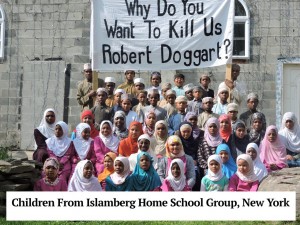 Charles Kurzman, “The PATRIOT Act Can’t Keep America Safe from Right-Wing Violence,” IslamiCommentary, May 27, 2015. With the “USA PATRIOT Act” set to expire at the end of the month, you might expect supporters of domestic surveillance to tout the take-down of the biggest plot of violent extremism America has experienced so far this year: an attempt to destroy an entire American community. But the plot was disrupted using standard investigative tools, not PATRIOT Act surveillance. That’s because the most powerful portion of the PATRIOT Act, Section 215, is limited to investigations of “international terrorism,” while this plot was a case of domestic terrorism. More…
Charles Kurzman, “The PATRIOT Act Can’t Keep America Safe from Right-Wing Violence,” IslamiCommentary, May 27, 2015. With the “USA PATRIOT Act” set to expire at the end of the month, you might expect supporters of domestic surveillance to tout the take-down of the biggest plot of violent extremism America has experienced so far this year: an attempt to destroy an entire American community. But the plot was disrupted using standard investigative tools, not PATRIOT Act surveillance. That’s because the most powerful portion of the PATRIOT Act, Section 215, is limited to investigations of “international terrorism,” while this plot was a case of domestic terrorism. More…
Homegrown Terrorism Threat Was Overhyped
 David Schanzer and Charles Kurzman, “Homegrown Terrorism Threat Was Overhyped,” Newark Star-Ledger, April 14, 2014. In the aftermath of the Boston Marathon bombing one year ago, many commentators and public officials called this tragedy a harbinger of more homegrown terrorist attacks to come. Fortunately, no one has been killed by homegrown terrorists in the past year and there have been no copycat attacks. A nationwide survey of law enforcement agencies we are conducting in collaboration with the Police Executive Research Forum shows that more than half of the agencies report little or no threat from al Qaeda-inspired extremism. Only 2 percent report the threat as “severe.” More…
David Schanzer and Charles Kurzman, “Homegrown Terrorism Threat Was Overhyped,” Newark Star-Ledger, April 14, 2014. In the aftermath of the Boston Marathon bombing one year ago, many commentators and public officials called this tragedy a harbinger of more homegrown terrorist attacks to come. Fortunately, no one has been killed by homegrown terrorists in the past year and there have been no copycat attacks. A nationwide survey of law enforcement agencies we are conducting in collaboration with the Police Executive Research Forum shows that more than half of the agencies report little or no threat from al Qaeda-inspired extremism. Only 2 percent report the threat as “severe.” More…
Gremlins of Terror
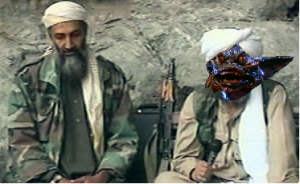 Charles Kurzman, “Gremlins of Terror,” December 31, 2013. Rationally, you may know that terrorism has proved to be a relatively minor threat to public safety. You may know that murders are rarer than they’ve been in half a century, and wars are less numerous than they’ve been in a generation. You can know this rationally, and still feel insecure. We scare ourselves constantly with movies and television and video games and books that make disaster look imminent, from Gremlins to Percy Jackson to Home Front. One man has made it his life work to help us feel anxious. More…
Charles Kurzman, “Gremlins of Terror,” December 31, 2013. Rationally, you may know that terrorism has proved to be a relatively minor threat to public safety. You may know that murders are rarer than they’ve been in half a century, and wars are less numerous than they’ve been in a generation. You can know this rationally, and still feel insecure. We scare ourselves constantly with movies and television and video games and books that make disaster look imminent, from Gremlins to Percy Jackson to Home Front. One man has made it his life work to help us feel anxious. More…
The Heresy of the Hijackers
 Charles Kurzman, “The Heresy of the Hijackers,” IslamiCommentary, September 11, 2013. What sort of Muslims carried out the largest mass murder in American history, 12 years today? The FBI refuses to release a document that might show just how unusual their brand of Islam was, and further reduce what little sympathy they enjoy among the world’s billion Muslims. More…
Charles Kurzman, “The Heresy of the Hijackers,” IslamiCommentary, September 11, 2013. What sort of Muslims carried out the largest mass murder in American history, 12 years today? The FBI refuses to release a document that might show just how unusual their brand of Islam was, and further reduce what little sympathy they enjoy among the world’s billion Muslims. More…
The Rights of Roamers
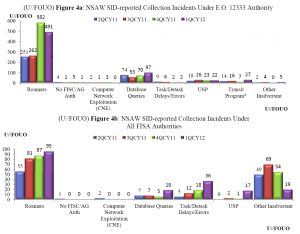 Charles Kurzman, “The Rights of Roamers and the Double Standard of American National Security,” IslamiCommentary, August 28, 2013. The National Security Agency labeled 1,904 foreigners as enough of a threat that it recorded their conversations. Then it let them in the United States. Then, when the NSA realized they were in the country, it stopped recording their conversations. Really? More…
Charles Kurzman, “The Rights of Roamers and the Double Standard of American National Security,” IslamiCommentary, August 28, 2013. The National Security Agency labeled 1,904 foreigners as enough of a threat that it recorded their conversations. Then it let them in the United States. Then, when the NSA realized they were in the country, it stopped recording their conversations. Really? More…
Prism’s Paltry Yield
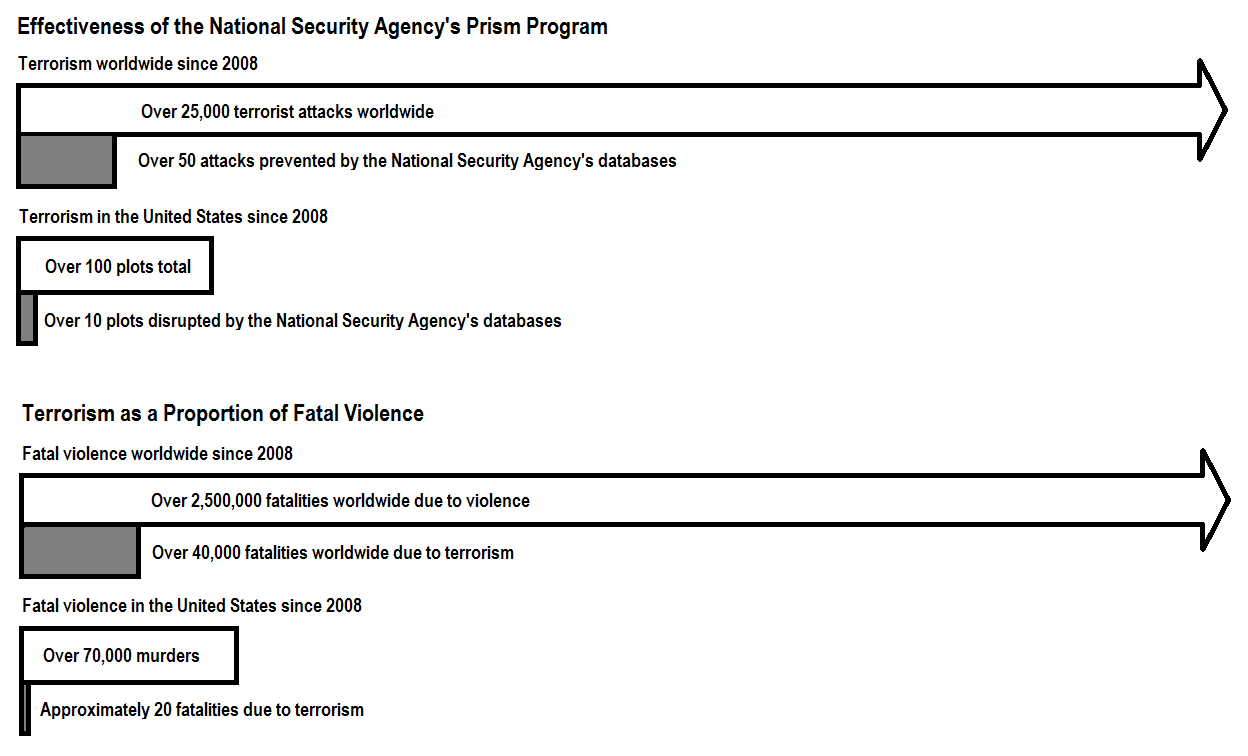 Charles Kurzman, “Prism’s Paltry Yield,” June 28, 2013. How effective are the National Security Agency’s databases in preventing terrorism? Prism and other databases have disrupted over 50 plots worldwide, including 10 or more “homeland-based” plots. This constitutes one-fifth of 1 percent of terrorist attacks worldwide since 2008, and about 10 percent of terrorist plots in the United States. In other words, the NSA’s unprecedented new powers have not put much of a dent in terrorism, and even less of a dent in public safety overall. More…
Charles Kurzman, “Prism’s Paltry Yield,” June 28, 2013. How effective are the National Security Agency’s databases in preventing terrorism? Prism and other databases have disrupted over 50 plots worldwide, including 10 or more “homeland-based” plots. This constitutes one-fifth of 1 percent of terrorist attacks worldwide since 2008, and about 10 percent of terrorist plots in the United States. In other words, the NSA’s unprecedented new powers have not put much of a dent in terrorism, and even less of a dent in public safety overall. More…
Mis-Mapping Terror
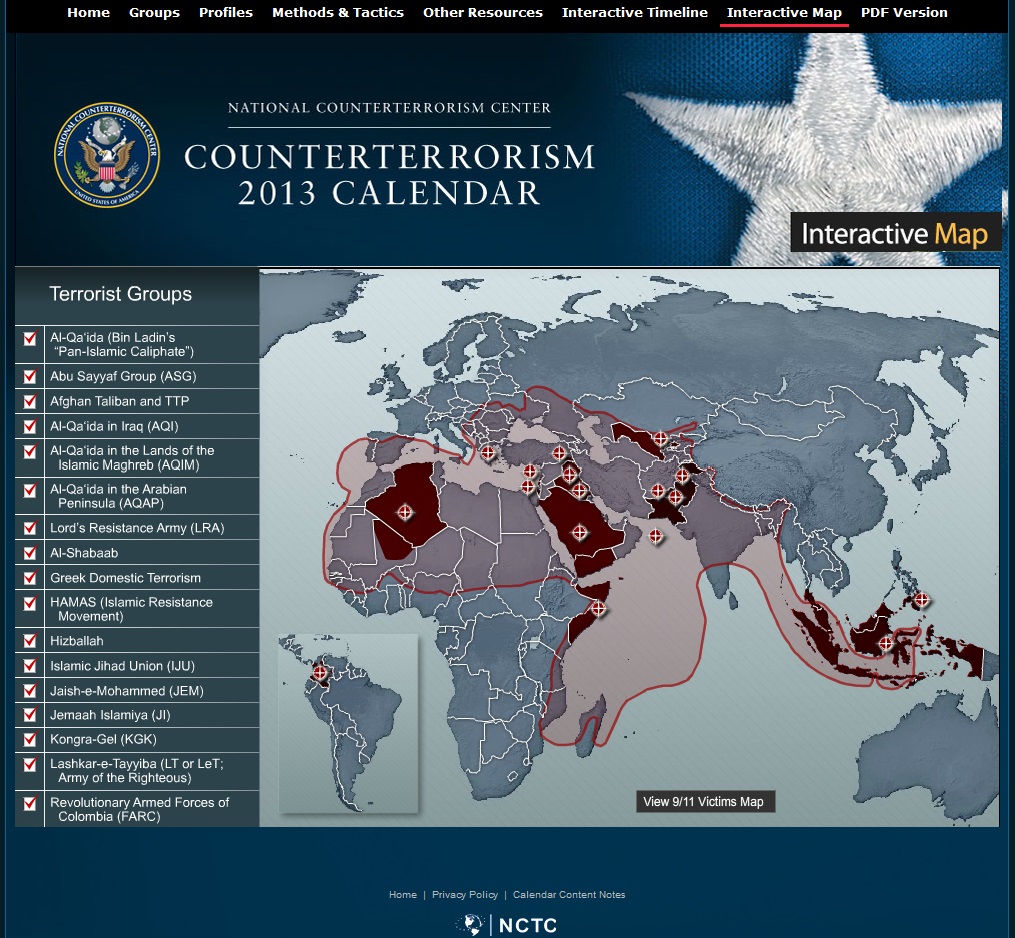 Charles Kurzman, “Mis-Mapping Terror: Why did an American counterterrorism agency map the entire Muslim world as a terror zone? And why was their map 500 years out of date?” IslamiCommentary, May 31, 2013. “‘The United States is not at war with Islam,’ President Obama said last week at the National Defense University, in a speech that declared an end to America’s ‘wartime footing’ in the fight against terrorism. President Bush said the same when he launched the war on terrorism in 2001: ‘We do not fight Islam, we fight against evil.’ But in America’s sprawling security establishment, not everyone has stayed on message. Until this week, the website of the National Counterterrorism Center (NCTC) — the U.S. government’s primary counterterrorism clearinghouse — featured a map that appeared to identify the entire Muslim world as a terror zone.” More…
Charles Kurzman, “Mis-Mapping Terror: Why did an American counterterrorism agency map the entire Muslim world as a terror zone? And why was their map 500 years out of date?” IslamiCommentary, May 31, 2013. “‘The United States is not at war with Islam,’ President Obama said last week at the National Defense University, in a speech that declared an end to America’s ‘wartime footing’ in the fight against terrorism. President Bush said the same when he launched the war on terrorism in 2001: ‘We do not fight Islam, we fight against evil.’ But in America’s sprawling security establishment, not everyone has stayed on message. Until this week, the website of the National Counterterrorism Center (NCTC) — the U.S. government’s primary counterterrorism clearinghouse — featured a map that appeared to identify the entire Muslim world as a terror zone.” More…
The Missing Martyrs
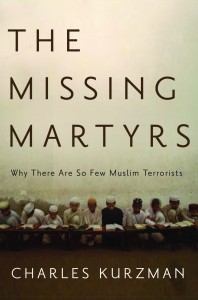 Charles Kurzman, The Missing Martyrs: Why There Are So Few Muslim Terrorists. Oxford University Press, 2011.
Charles Kurzman, The Missing Martyrs: Why There Are So Few Muslim Terrorists. Oxford University Press, 2011.
“The rental car rolled onto the sidewalk behind the registrar’s office and drove slowly down the brick path between a dining hall and the English Department, a few steps from my office. ‘Beyond Time,’ an upbeat German dance song, played in the car’s stereo. The driver, Muhammad Taheri-Azar, had just graduated from the University of North Carolina three months earlier, so he knew the campus well. Beyond the dining hall was a plaza known as the Pit, where students were hanging out at lunchtime on a warm winter day in early 2006. Taheri-Azar planned to kill as many of them as possible.” More…
Islamic Statements Against Terrorism

Charles Kurzman, “Islamic Statements Against Terrorism”: “The undersigned, leaders of Islamic movements, are horrified by the events of Tuesday 11 September 2001 in the United States which resulted in massive killing, destruction and attack on innocent lives. We express our deepest sympathies and sorrow. We condemn, in the strongest terms, the incidents, which are against all human and Islamic norms. This is grounded in the Noble Laws of Islam which forbid all forms of attacks on innocents. God Almighty says in the Holy Qur’an: ‘No bearer of burdens can bear the burden of another’ (Surah al-Isra 17:15).” More…
Why Is It So Hard to Find a Suicide Bomber These Days?
 Charles Kurzman, “Why Is It So Hard to Find a Suicide Bomber These Days?” Foreign Policy, September/October 2011. “There will be more terrorist attacks, and some could be successful in killing hundreds of people, perhaps even thousands. Last year, Faisal Shahzad almost succeeded in an attack of this scale, filling a vehicle with explosives and parking it just off Times Square in New York City. As with the terrorist who drove through campus in Chapel Hill, incompetence saved the day — Shahzad used faulty firecrackers as his detonator. We may not be so lucky in the future. But even if they succeed in killing thousands of us, attacks like these do not threaten our way of life, unless we let them.” More…
Charles Kurzman, “Why Is It So Hard to Find a Suicide Bomber These Days?” Foreign Policy, September/October 2011. “There will be more terrorist attacks, and some could be successful in killing hundreds of people, perhaps even thousands. Last year, Faisal Shahzad almost succeeded in an attack of this scale, filling a vehicle with explosives and parking it just off Times Square in New York City. As with the terrorist who drove through campus in Chapel Hill, incompetence saved the day — Shahzad used faulty firecrackers as his detonator. We may not be so lucky in the future. But even if they succeed in killing thousands of us, attacks like these do not threaten our way of life, unless we let them.” More…
Where Are All the Islamic Terrorists?
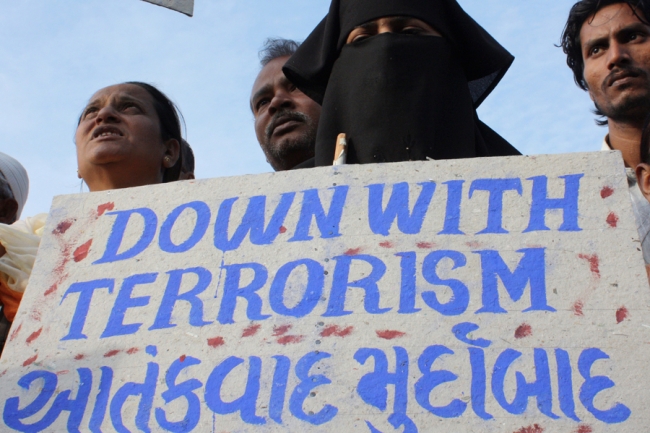 Charles Kurzman, “Where Are All the Islamic Terrorists?” Chronicle of Higher Education, July 31, 2011. “Last month, a few hours after a bomb exploded in downtown Oslo, I got a call from a journalist seeking comment. Why did Al Qaeda attack Norway? … I felt a creepy sensation that I have experienced often since 9/11. In the fields of Middle East and Islamic studies, bad news is good for business.” More…
Charles Kurzman, “Where Are All the Islamic Terrorists?” Chronicle of Higher Education, July 31, 2011. “Last month, a few hours after a bomb exploded in downtown Oslo, I got a call from a journalist seeking comment. Why did Al Qaeda attack Norway? … I felt a creepy sensation that I have experienced often since 9/11. In the fields of Middle East and Islamic studies, bad news is good for business.” More…
Data Sources and Further Readings
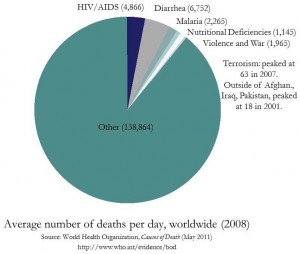 Analyze the data yourself! Data sources include:
Analyze the data yourself! Data sources include:
Muslim-American terrorism since 9/11
Murders in the United States since 9/11
Terrorist fatalities in each country since 1970
Causes of death worldwide
Wars since 1946
Muslim public opinion
Plus, suggested readings on Islam and terrorism. More…
